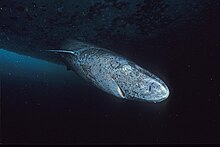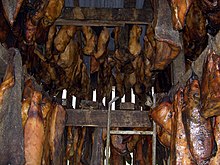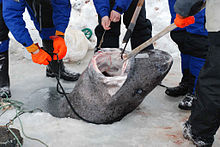User:PlantLady21/sandbox
Greek Lamprey
Greek Lamprey
Greek Lamprey
Greek Lamprey
CO2

Na2+
Farting as a defence against unspeakable dread.
- Bullet
- Bullet
- Bullet
- Number
- Number
- Number
Symbols
° ≈ § ɰ «» ℳ ■ Φ β Ҧ Ҩ ᛪ
Image insert
Scotoplanes globosa, commonly known as the sea pig, is a species of sea cucumber that lives in the deep sea. It was first described by Hjalmar Théel, a Swedish scientist. Scotoplanes globosa, along with numerous other sea cucumbers were discovered by Théel during an expedition on HMS Challenger between the years of 1873-1876. Scotoplanes globosa was officially described in 1882, 6 to 9 years after its first sighting. Scotoplanes globosa is most closely related to the genus Peniagone.
Contents[edit]
Ecology[edit][edit]
Congregations of smaller Scotoplanes globosa are often observed on the ocean floor in groups of 10 to 30. However, groups of Scotoplanes globosa have been observed to be as many as 600 individuals in one congregation. A congregation of Scotoplanes globosa is called a "trawl". These groups of Scotoplanes globosa often appear to all be facing in one direction, into the ocean current. It is believed that this behavior aids S. globosa in the detection of the richest feeding sites. Scotoplanes globosa has also been observed to be the host of multiple deep-sea parasites, such as the small gastropods Stilapex and Crinolamia, and various parasitic crustaceans. These parasites typically bore small holes into the body wall of S. globosa. Scotoplanes globosa are also often accompanied by a symbiotic lithodid crab, the Neolithodes diomedea. It is believed that approximately 22% of Scotoplanes globosa are attended by at least one of these crabs. At this time, scientists are unsure whether the relationship between S. globosa and N. diomedea is mutualistic or commensal.
Anatomy[edit][edit]
Scotoplanes globosa is typically 2 to 15 cm in length and appear to be a translucent white color. S. globosa is covered in tube-like feet which are used in locomotion. The tube-like structures found on top of the Scotoplanes globosa are also feet, as opposed to antennae. Scientists are still unsure whether these upper-tube-feet are used in locomotion or used as sensory accessories. They are quite buoyant and are easily displaced by strong currents.
Locomotion[edit][edit]
Scotoplanes globosa has a soft, round body with five-to-seven pairs of long, tube-like limbs extending from its body. S. globosa uses these limbs for locomotion. They “walk” along the ocean floor using muscle constrictions to push fluid in and out the tube feet cavities. Scotoplanes is the only genus of holothurians that have been observed to "walk" in this manner.
Distribution and habitat[edit][edit]
Scotoplanes globosa are found in almost all deep-sea regions in the world. Specifically, S. globosa live on the abyssal plain. They are commonly found off the coast of San Diego, as well as in the Arctic, Atlantic, Pacific, and Indian Oceans. Scotoplanes globosa typically live at depths of over 1000 m (3280 ft), and have been found in the deepest locations in the ocean, including the Kermadec Trench at a depth of 6659 m (21850 ft) and in the Philippine Trench at a depth of 9997 m (32800 ft) by the Galathea expedition in the 1950s. Scotoplanes globosa have been observed to face in a certain direction which is normally against the current and that is because it helps them to search for more fresh and better food quality.
Diet[edit][edit]
Scotoplanes globosa is a deposit feeder, eating detritus which has sunk to the ocean floor. S. globosa has been observed to strongly prefer consuming fresh, recently fallen (approximately within the last 100 days) sediments on the surface of the ocean floor as opposed to older sediments. These freshly-fallen sediments are more nutrient-rich. Scotoplanes globosa captures food through its mucous-covered tentacles which surround their mouth. S. globosa is also known to congregate around the carcasses of whales which have fallen to the seafloor. Lundsten et al. (2010) determined that S. globosa find deep-sea whale carcasses by smell, as well as other nutrient-rich food sources; the extremely nutrient-rich whale carcasses also attract other deep-sea creatures in large numbers.
References[edit][edit]
- ^
- ^
- ^ Jump up to:a b
- ^
- ^ Jump up to:a b c
- ^ Jump up to:a b c d
- ^ Idyll, C. P. (1964). Abyss: The Deep Sea and the Creatures that live in it. Thomas Y. Crowell Co.
- ^
- ^ Jump up to:a b
- ^ Jump up to:a b
| Taxon identifiers | |
|---|---|
| Scotoplanes globosa |
|
| Elpidia globosa | |
Greenland Shark[edit]
Physiological adaptations[edit]

Like other elasmobranchii, Greenland sharks have high concentrations of the nitrogenous waste products urea and trimethylamine N-oxide (TMAO) in their tissues, which increases their buoyancy[1] and function as osmoprotectants. The TMAO in the sharks blood replaces some of the osmotic pressure exerted by sodium, which removes some of the burdens of having to pump sodium ions out of the body. TMAO also counteracts the protein-destabilizing tendencies of urea[2][3] and of deep-water pressure.[4][3] Its presence in the tissues of both elasmobranch and teleost fish has been found to increase with depth.[4][5]
The blood of Greenland sharks contains three major types of hemoglobin, made up of two copies of α globin combined with two copies of three very similar β subunits. These three types show very similar oxygenation and carbonylation properties, which are unaffected by urea, an important compound in marine elasmobranch physiology. They display identical electronic absorption and resonance Raman spectra, indicating that their heme-pocket structures are identical or highly similar. The hemoglobins also have a lower affinity for O2 compared to temperate sharks. These characteristics are interpreted as adaptations to living at great water depths.[6]
As food[edit]

The flesh of the Greenland shark is toxic because of the presence of high concentrations of trimethylamine oxide (TMAO). If the meat is eaten without pretreatment, the ingested TMAO is metabolized into trimethylamine, which can produce effects similar to extreme drunkenness. High levels of trimethylamine in the human body can cause coughing, shortness of breath, pulmonary edema, cardiovascular disease and also death.[7] Occasionally, sled dogs that eat the flesh are unable to stand up because of this effect. Similar toxic effects occur with the related Pacific sleeper shark, but not in most other shark species.[8][9]
The meat can be treated for safe consumption by boiling in several changes of water, drying, or fermenting for several months to produce kæstur hákarl. Traditionally, this is done by burying the meat in boreal ground for 6–8 weeks, which presses the TMAO out of the meat and also results in partial fermentation. The meat is then dug up and hung up in strips to dry for several more months.[10] It is considered a delicacy in Iceland.[11][self-published source?][12][13]
Inuit legends[edit]

The Greenland shark's poisonous flesh has a high urea content, which gave rise to the Inuit legend of Skalugsuak, the first Greenland shark.[14] The legend says that an old woman washed her hair in urine and dried it with a cloth. The cloth blew into the ocean to become Skalugsuak, now known as the Greenland shark.[15] Another Inuit legend tells of Sedna who refused to marry the man selected by her father.[16] Angered by this, her father cut off her fingers while drowning her, with each finger turning into a sea creature, including Skalugsuak.[17]
The Greenland shark plays a role in cosmologies of the Inuit from the Canadian Eastern Arctic and Greenland. Igloolik Inuit believe that the shark lives within the urine pot of Sedna, goddess of the sea, and consequently its flesh has a urine-like smell, and acts as a helping spirit to shamans.[18]
Ecological importance[edit]
Role in Arctic ecosystems[edit]
As both scavengers and active predators, Greenland sharks have established themselves as apex predators in Arctic ecosystems. They eat a wide variety of fish, seals, and other prey within these ecosystems and have an important role in the intricate food web.[19][20] They are also a host to Ommatokoita elongata, a parasitic copepod.[21] This parasite may damage or even blind the shark.[22] Due to the limited information known on the Greenland shark, the extent of their importance in the Arctic marine ecosystem is still unrecognized. However, looking at studies of other large sharks, it can be assumed that the Greenland shark has a high trophic position.[22] The only confirmed predator of this species is a sperm whale, Physeter macrocephalus, named "Tryphon" who showed predatory behaviour towards a Greenland shark in the St. Lawrence estuary before he died in 2009.[23]
Conservation and management[edit]
Greenland sharks are recognized as the longest-lived vertebrates on earth. They have a slow growth rate, late maturity period, and low fecundity, making the management and conservation of this species very important. As a result of their low productivity and extreme longevity, this species is particularly susceptible to overfishing. Therefore, Greenland sharks' longevity and conservative life history traits, in tandem with their vulnerability to accidental catching and commercial fishing, promotes a growing concern for the sustainability of this species.[24] Limitations in the duration of fishing seasons have been examined as a method to reduce the Greenland shark bycatch rate. Changes to fishing gear have also been seen to help reduce the sharks bycatch mortality rate.[24] New tagging technologies allow detailed monitoring of Greenland sharks to shed light on their susceptibility to fishing practices.[25] To further protect the Greenland shark species, laws and policies have been implemented at the global, regional, and national levels.
Global[edit]
Under the IUCN Red List of Threatened Species, the Greenland shark has been put under the category of near threatened.[24] The Food and Agriculture Organization (FAO) also adopted an International Plan of Action for the Conservation and Management of Sharks.
Regional[edit]
In November 2017, a draft Agreement to Prevent Unregulated High Seas FIsheries in the Central Arctic Ocean was a huge regional development in the conservation of the Greenland shark.[24] This prohibits the authorization of vessels to conduct fishing in the central Arctic Ocean until one or more regional or sub-regional fisheries management organizations adopts conservation and management measures for fish stocks in the area.[24] The Northwest Atlantic Fisheries Organization (NAFO) and the North-East Atlantic Fisheries Commision (NEAFC) have also adopted general shark conservation and enforcement measures to address shark conservation.[24]
National[edit]
In 2007, Canada adopted a National Plan of Action for the Conservation and Management of Sharks.[24]
Threats[edit]

The shark has historically been targeted for its liver oil up until the development of synthetic oils and cessation of export of liver oil and skin from Greenland in the 1960s.[26] In the 1970s, the species was perceived as a problem for other fisheries in western Norway and the government subsidized a fishery in order to reduce the stock of the species.[27] Approximately 3,500 individuals are taken as bycatch each year in the Atlantic and Arctic Ocean and Barents Sea.[28] More than 1,000 individuals are caught annually from Arctic waters south to USA waters.[29] Annual catch of Greenland shark from the Barents Sea was estimated to be around 1,200 individuals per year.[28]
The shark is also likely affected by anthropogenic climate change, which is affecting the quantity, dynamics, and distribution of Arctic sea ice.[30] The rate of projected loss of sea ice will continue to negatively influence the abundance, distribution and availability of prey, while, at the same time, providing greater access for fishing fleets.[30] Further, there is greater potential for new fisheries to develop as more productive and abundant southerly species invade the warming Arctic waters.[31]
The Greenland shark has no threats when it comes to predation. The only recorded predation activity against these sharks was in 2009 by a sperm whale, "Tryphon". After this whales death in 2009, investigations showed that the whales teeth anomalies were the same dental anomalies found in orcas who fed on Pacific sleeper sharks, a relative of the Greenland shark.[23] This supports the idea that it is possible that the Greenland shark was hunted by Tryphon the sperm whale.
- ^ Withers, Philip C.; Morrison, Garrick; Guppy, Michael (1994). "Buoyancy Role of Urea and TMAO in an Elasmobranch Fish, the Port Jackson Shark, Heterodontus portusjacksoni". Physiological Zoology. 67 (3): 693–705. doi:10.1086/physzool.67.3.30163765. JSTOR 30163765. S2CID 100989392.
- ^ Bennion, Brian J.; Daggett, Valerie (2004). "Counteraction of urea-induced protein denaturation by trimethylamine N-oxide: a chemical chaperone at atomic resolution". Proceedings of the National Academy of Sciences of the United States of America. 101 (17): 6433–8. Bibcode:2004PNAS..101.6433B. doi:10.1073/pnas.0308633101. PMC 404062. PMID 15096583.
- ^ a b Yancey, Paul H. (2005). "Organic osmolytes as compatible, metabolic and counteracting cytoprotectants in high osmolarity and other stresses". The Journal of Experimental Biology. 208 (Pt 15): 2819–30. doi:10.1242/jeb.01730. PMID 16043587.
- ^ a b Yancey, Paul H.; Gerringer, Mackenzie E.; Drazen, Jeffrey C.; Rowden, Ashley A.; Jamieson, Alan (2014). "Marine fish may be biochemically constrained from inhabiting the deepest ocean depths". Proceedings of the National Academy of Sciences of the United States of America. 111 (12): 4461–5. Bibcode:2014PNAS..111.4461Y. doi:10.1073/pnas.1322003111. PMC 3970477. PMID 24591588.
- ^ Treberg, Jason R.; Driedzic, William R. (2002). "Elevated levels of trimethylamine oxide in deep-sea fish: evidence for synthesis and intertissue physiological importance". Journal of Experimental Zoology. 293 (1): 39–45. doi:10.1002/jez.10109. PMID 12115917.
- ^ Russo, Roberta; et al. (12 October 2017). "The Greenland Shark Somniosus microcephalus—Hemoglobins and Ligand-Binding Properties". PLOS ONE. 12 (10): e0186181. Bibcode:2017PLoSO..1286181R. doi:10.1371/journal.pone.0186181. PMC 5638460. PMID 29023598.
- ^ "Red meat, TMAO, and your heart". Harvard Health. 2019-09-01. Retrieved 2022-04-07.
- ^ "The Greenland Shark Is A Very Odd Species Of Shark – Shark Sider". Retrieved 17 August 2016.
- ^ "The Greenland Shark: An Icy Mystery". Greenland Shark | Sharkopedia Sharkopedia. Archived from the original on 7 January 2018. Retrieved 17 August 2016.
- ^ Wheatley, Gale (20 September 2010). "Iceland's Wild Culinary Traditions: Hákarl and Brennivín".
- ^ Blumenfeld, Jenna (16 June 2011). "My Encounter With Hákarl, The Worst Tasting Food On Earth".
- ^ "Hákarl – Icelandic Fermented Shark". Islands. Retrieved 13 August 2016.[permanent dead link]
- ^ Shardlow, Ju; Romeo, Claudia. "Greenland shark is the most toxic shark in the world, but one family has been curing it for hundreds of years". Insider. Insider. Retrieved 23 January 2022.
- ^ O'Reilly, Lindsay (2004). "Skalugsuak's origins". Canadian Geographic. Archived from the original on 21 March 2016. Retrieved 13 August 2016.
- ^ "Greenland Shark and Elasmobranch Education and Research Group". Greenland Shark and Elasmobranch Education and Research Group. Archived from the original on 14 October 2013. Retrieved 13 August 2016.
- ^ "Sedna Legend". Sedna Epic Expedition. Retrieved 2022-04-07.
- ^ Helfman, Gene; Burgess, George H. (2014). Sharks: The Animal Answer Guide. Johns Hopkins University Press.
- ^ Idrobo, Carlos Julián (2009). The Pangnirtung Inuit and the Greenland Shark (PDF) (MSc Thesis). University of Manitoba. p. 66. OCLC 855389661.
- ^ Lydersen, Christian; Fisk, Aaron T.; Kovacs, Kit M. (November 2016). "A review of Greenland shark (Somniosus microcephalus) studies in the Kongsfjorden area, Svalbard Norway". Polar Biology. 39 (11): 2169–2178. doi:10.1007/s00300-016-1949-3. ISSN 0722-4060. S2CID 15050012.
- ^ Nielsen, Julius; Christiansen, Jørgen Schou; Grønkjær, Peter; Bushnell, Peter; Steffensen, John Fleng; Kiilerich, Helene Overgaard; Præbel, Kim; Hedeholm, Rasmus (2019). "Greenland Shark (Somniosus microcephalus) Stomach Contents and Stable Isotope Values Reveal an Ontogenetic Dietary Shift". Frontiers in Marine Science. 6. doi:10.3389/fmars.2019.00125. ISSN 2296-7745.
- ^ MacNeil, M. A.; McMeans, B. C.; Hussey, N. E.; Vecsei, P.; Svavarsson, J.; Kovacs, K. M.; Lydersen, C.; Treble, M. A.; Skomal, G. B.; Ramsey, M.; Fisk, A. T. (2012-04). "Biology of the Greenland shark Somniosus microcephalus". Journal of Fish Biology. 80 (5): 991–1018. doi:10.1111/j.1095-8649.2012.03257.x.
{{cite journal}}: Check date values in:|date=(help) - ^ a b Davis, Brendal; VanderZwaag, David L.; Cosandey-Godin, Aurelie; Hussey, Nigel E.; Kessel, Steven T.; Worm, Boris (2013-10). "The Conservation of the Greenland Shark ( Somniosus microcephalus ): Setting Scientific, Law, and Policy Coordinates for Avoiding a Species at Risk". Journal of International Wildlife Law & Policy. 16 (4): 300–330. doi:10.1080/13880292.2013.805073. ISSN 1388-0292.
{{cite journal}}: Check date values in:|date=(help) - ^ a b Gallant, Jeffrey (2019-02-26). "Greenland Shark". St. Lawrence Shark Observatory (ORS | GEERG). Retrieved 2022-03-09.
- ^ a b c d e f g Edwards, Jena E.; Hiltz, Elizabeth; Broell, Franziska; Bushnell, Peter G.; Campana, Steven E.; Christiansen, Jørgen S.; Devine, Brynn M.; Gallant, Jeffrey J.; Hedges, Kevin J.; MacNeil, M. Aaron; McMeans, Bailey C. (2019-04-02). "Advancing Research for the Management of Long-Lived Species: A Case Study on the Greenland Shark". Frontiers in Marine Science. 6: 87. doi:10.3389/fmars.2019.00087. ISSN 2296-7745.
- ^ Edwards, Jena E.; Hiltz, Elizabeth; Broell, Franziska; Bushnell, Peter G.; Campana, Steven E.; Christiansen, Jørgen S.; Devine, Brynn M.; Gallant, Jeffrey J.; Hedges, Kevin J.; MacNeil, M. Aaron; McMeans, Bailey C. (2019). "Advancing Research for the Management of Long-Lived Species: A Case Study on the Greenland Shark". Frontiers in Marine Science. 6. doi:10.3389/fmars.2019.00087/full. ISSN 2296-7745.
{{cite journal}}: CS1 maint: unflagged free DOI (link) - ^ Hedeholm et al. 2018
- ^ Castro et al. 1999
- ^ a b Rusyaev and Orlov 2013
- ^ Bryk et al. 2018, Hedeholm et al. 2018, Hendrickson 2018, Hendrickson et al. 2018, Simpson et al. 2018, Wheeland and Devine 2018
- ^ a b Edwards et al. 2019
- ^ Tai et al. 2019
